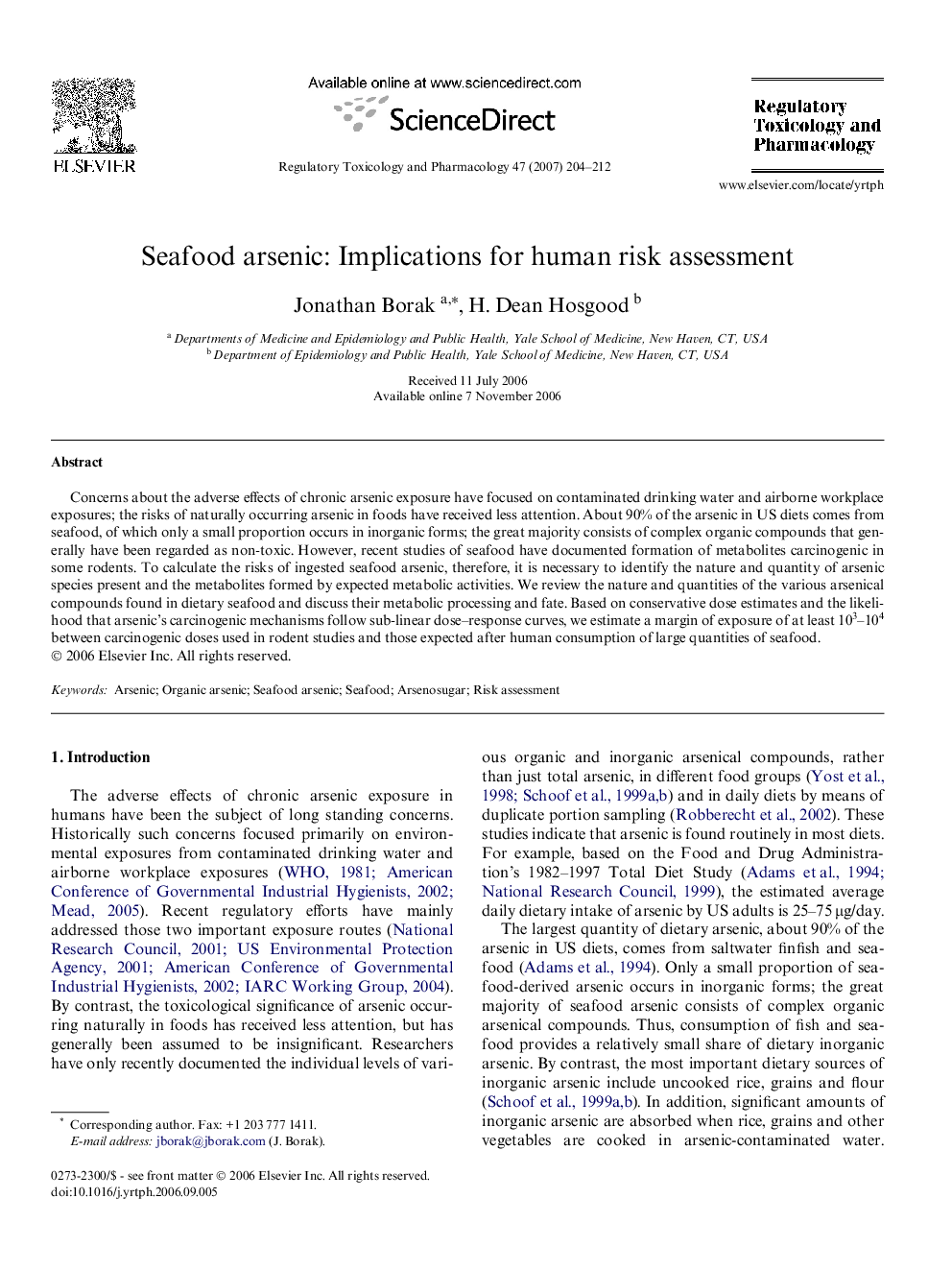| Article ID | Journal | Published Year | Pages | File Type |
|---|---|---|---|---|
| 2593106 | Regulatory Toxicology and Pharmacology | 2007 | 9 Pages |
Concerns about the adverse effects of chronic arsenic exposure have focused on contaminated drinking water and airborne workplace exposures; the risks of naturally occurring arsenic in foods have received less attention. About 90% of the arsenic in US diets comes from seafood, of which only a small proportion occurs in inorganic forms; the great majority consists of complex organic compounds that generally have been regarded as non-toxic. However, recent studies of seafood have documented formation of metabolites carcinogenic in some rodents. To calculate the risks of ingested seafood arsenic, therefore, it is necessary to identify the nature and quantity of arsenic species present and the metabolites formed by expected metabolic activities. We review the nature and quantities of the various arsenical compounds found in dietary seafood and discuss their metabolic processing and fate. Based on conservative dose estimates and the likelihood that arsenic’s carcinogenic mechanisms follow sub-linear dose–response curves, we estimate a margin of exposure of at least 103–104 between carcinogenic doses used in rodent studies and those expected after human consumption of large quantities of seafood.
